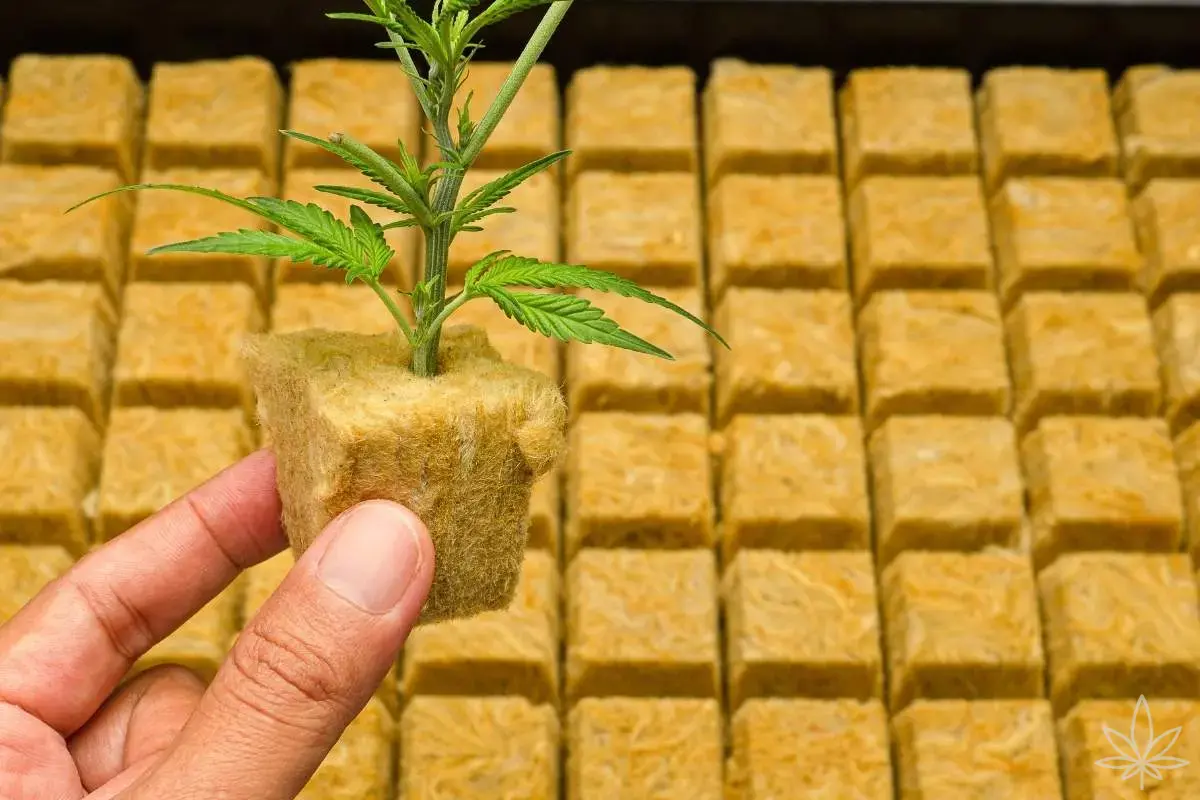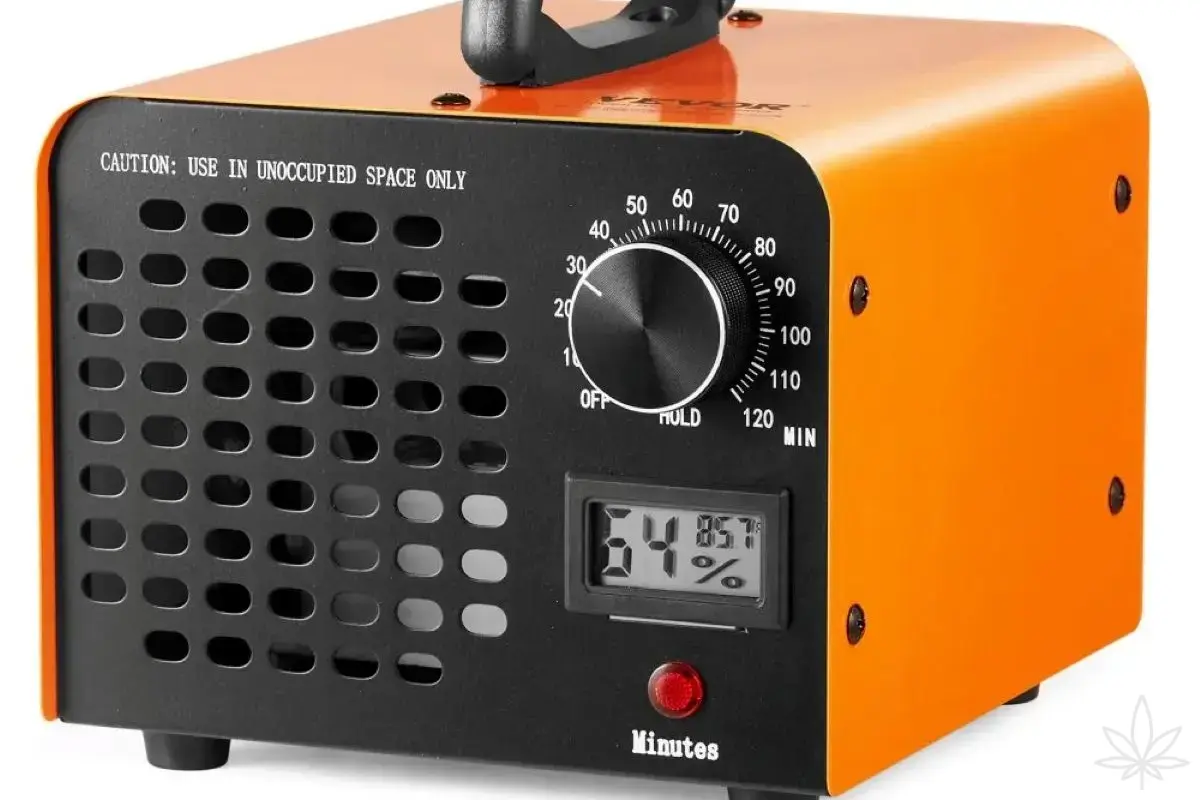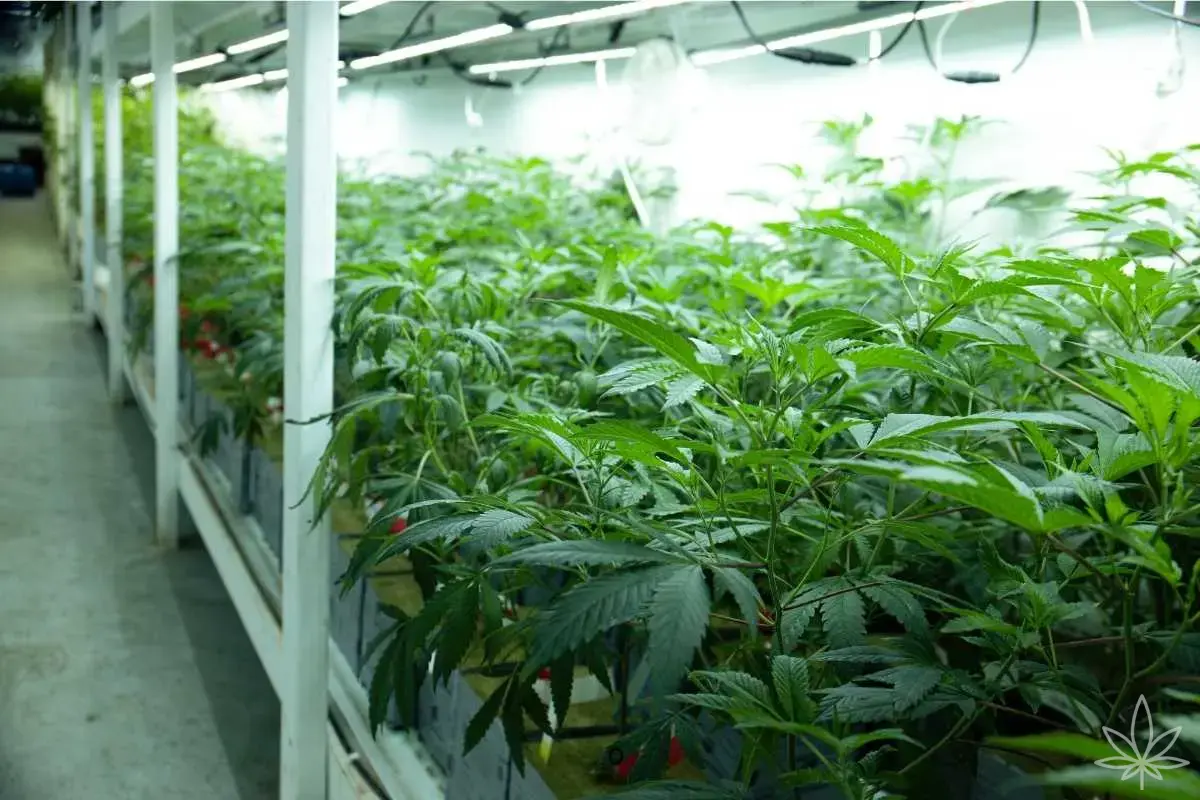Rockwool, or mineral wool pressed into cubes, is one of the most popular substrates in indoor cannabis cultivation. Easy to get, affordable, sterile, and perfect for hydroponics – but not without its downsides. Let’s see how it’s produced, how to work with it, and what impact it may have on human health and the environment.
What is Rockwool Made Of?
Mineral wool is nothing more than… melted rock. In practice, manufacturers mainly use basalt, dolomite, and limestone. The raw material is heated to around 1600°C, then spun in special turbines – a bit like making cotton candy, only with stone instead of sugar. The fibers are then bonded with resins and shaped into slabs, rolls, or cubes.
In cannabis cultivation, growers use Rockwool cubes – starting with small ones (for germination), and then larger blocks into which the plant is transplanted.
Why Do Growers Love Rockwool?
- Sterility – the material is practically free from pathogens and pests since the high heat kills everything.
- Fibrous structure – great oxygen and water retention; roots can breathe freely.
- Chemical neutrality – Rockwool itself has no nutrients, so the grower has full control over feeding.
- Versatility – perfect for hydroponics (NFT, ebb&flow, DWC), but also for starting seedlings before moving them into another medium.
Price? Small starter cubes cost just a few euro cents each, while large blocks for a plant are around 2–3 EUR.
How to Handle Rockwool?
Here’s where things get tricky. Rockwool is a demanding medium.
- Soaking – before use, it must be thoroughly rinsed and soaked in water with pH 5.5. Why? Because fresh Rockwool naturally has a high pH (around 7–8). If you skip this step, your plant may suffer nutrient lockout.
- Constant pH and EC monitoring – since Rockwool has no buffer, every change in feeding shows up immediately in the plant. Great for number geeks, but unforgiving for sloppy growers.
- Moisture control – don’t overwater; the fibers can get waterlogged easily. Solution must flow through and drain.
Rockwool and Grower’s Health
And now the darker side. Mineral wool fibers can:
- irritate skin – itching and a fiberglass-like rash;
- irritate respiratory tract – dust from cutting and crumbling cubes isn’t friendly to your lungs;
- irritate eyes – airborne particles act like microscopic needles.
Good practices:
- always wear gloves when handling;
- use a dust mask and safety glasses when cutting or moving cubes;
- never cut Rockwool dry inside a closed growroom – the dust settles everywhere.
Officially, Rockwool is not classified as carcinogenic (unlike asbestos), but chronic exposure to dust can lead to respiratory issues.
Rockwool and the Environment
This part is even more problematic.
- Production – melting basalt at 1600°C consumes massive amounts of energy.
- Recycling – practically impossible. Used Rockwool ends up in landfills and decomposes… very slowly.
- Zero biodegradability – unlike coco or peat, you can’t just throw it onto a compost pile.
So, if you’re looking for a 100% eco-friendly grow, Rockwool isn’t your best option.
Alternatives to Rockwool
- Coco – natural, biodegradable coconut fiber, easier to handle.
- Jiffy pellets (peat tablets) – great for germination and rooting.
- Aeroponics – eliminates the need for substrate entirely.
Still, no other medium gives you the same level of control in hydroponics as Rockwool – and that’s why it remains a favorite among growers.
FAQ
Can Rockwool be reused?
Technically yes – after sterilization, but in practice it’s not worth it. Most growers use cubes only once.
Does Rockwool affect the taste of cannabis?
No, as long as you flush the system before harvest.
Can I throw Rockwool cubes into compost?
No, because they don’t biodegrade. Dispose of them with general waste.
Conclusion
Rockwool is like a scalpel in a surgeon’s hands – it offers precision and excellent root conditions but requires caution. If you value full control and love hydroponics, it’s a great medium. Just remember: protect your health (gloves, mask, glasses) and keep in mind that the environment isn’t exactly cheering for this choice.







